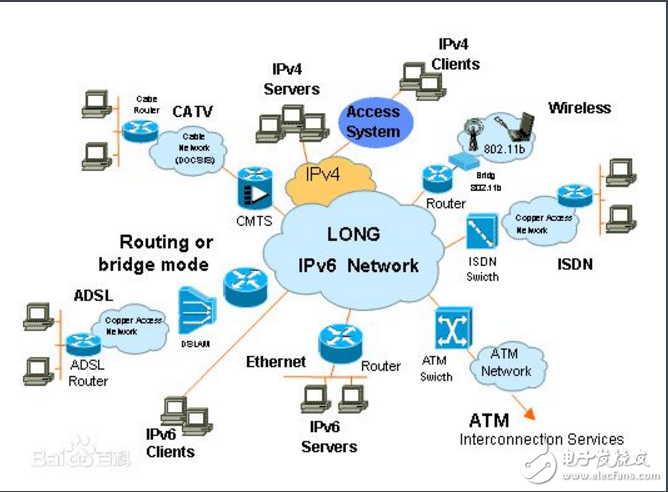IPv6 is an abbreviation of Internet Protocol Version 6, in which Internet Protocol is translated as "Internet Protocol." IPv6 is a next-generation IP protocol designed by the IETF (Internet Engineering Task Force) to replace the current version of the IP protocol (IPv4). It claims to be able to compile a URL for every grain of the world.
The biggest problem with IPv4 is the limited network address resources, which seriously restricts the application and development of the Internet. The use of IPv6 not only solves the problem of the number of network address resources, but also solves the obstacles for multiple access devices to connect to the Internet.
The design idea of ​​IPv4 has successfully created the current international Internet, and its core values ​​are: simple, flexible and open. However, with the emergence of new applications, the traditional IPv4 protocol has been difficult to support the further expansion of the Internet and the characteristics of new services, such as real-time applications and service quality assurance. The shortcomings are mainly reflected in the following aspects:
1. The address resource is about to be exhausted: the number of IP addresses provided by IPv4 is 32 bits, that is, about 100 million addresses. With the rapid increase in the number of hosts connected to the Internet, there are predictions that all IPv4 addresses will be allocated between 2005 and 2010.
2. The routing table is getting larger and larger: Since IPv4 uses an interface that is independent of the network topology to allocate addresses, the number of routers increases rapidly as the number of connected networks increases, and accordingly, the routing table that determines the data transmission route also It keeps growing.
3. Lack of Quality of Service Assurance: IPv4 follows the Best Effort principle, which is an advantage because it makes IPv4 simple and efficient; on the other hand, it lacks effective support for new types of services emerging on the Internet, such as real-time and multimedia. Applications that require certain quality of service guarantees such as bandwidth, latency, and jitter.
4. Inaccurate address allocation: IPv4 uses a manual configuration method to assign addresses to users, which not only increases the complexity of management and planning, but also is not conducive to providing better services for users who need IP mobility.
IPv6 can solve many problems of IPv4, such as address shortage and service quality assurance. At the same time, IPv6 has also made a number of improvements to IPv4, including routing and network autoconfiguration. IPv6 and IPv4 will coexist for several years during the transition period, and IPv6 will gradually replace IPv4.
display methodThe IPv6 address length is 128b, which is four times the length of the IPv4 address. Therefore, the IPv4 dotted decimal format is no longer applicable, and is expressed in hexadecimal. There are three ways to represent IPv6.
First, the hexadecimal notationThe format is X:X:X:X:X:X:X:X, where each X represents 16b in the address, expressed in hexadecimal, for example:
ABCD: EF01: 2345: 6789: ABCD: EF01: 2345: 6789
In this notation, the leading zero of each X can be omitted, for example:
2001:0DB8:0000:0023:0008:0800:200C:417A→2001:DB8:0:23:8:800:200C:417A
Second, 0-bit compression representationIn some cases, an IPv6 address may contain a long period of 0, which can compress a consecutive segment of 0 into "::". However, to ensure the uniqueness of address resolution, "::" in the address can only appear once, for example:
FF01:0:0:0:0:0:0:1101 → FF01::1101
0:0:0:0:0:0:0:1 → ::1
0:0:0:0:0:0:0:0 → ::
Third, embedded IPv4 address notationIn order to implement IPv4-IPv6 interworking, the IPv4 address is embedded in the IPv6 address. In this case, the address is often expressed as: X:X:X:X:X:X:dddd, the first 96b is represented by a hexadecimal notation, and the last 32b The address is expressed in dotted decimal notation of IPv4. For example: 192.168.0.1 and ::FFFF:192.168.0.1 are two typical examples. Note that in the first 96b, the method of compressing 0 bit is still applicable.

3.1 Home Theater Speaker,Home Cinema System,Bluetooth Home Theatre,Home Theatre
GUANGZHOU SOWANGNY ELECTRONIC CO.,LTD , https://www.jerry-power.com